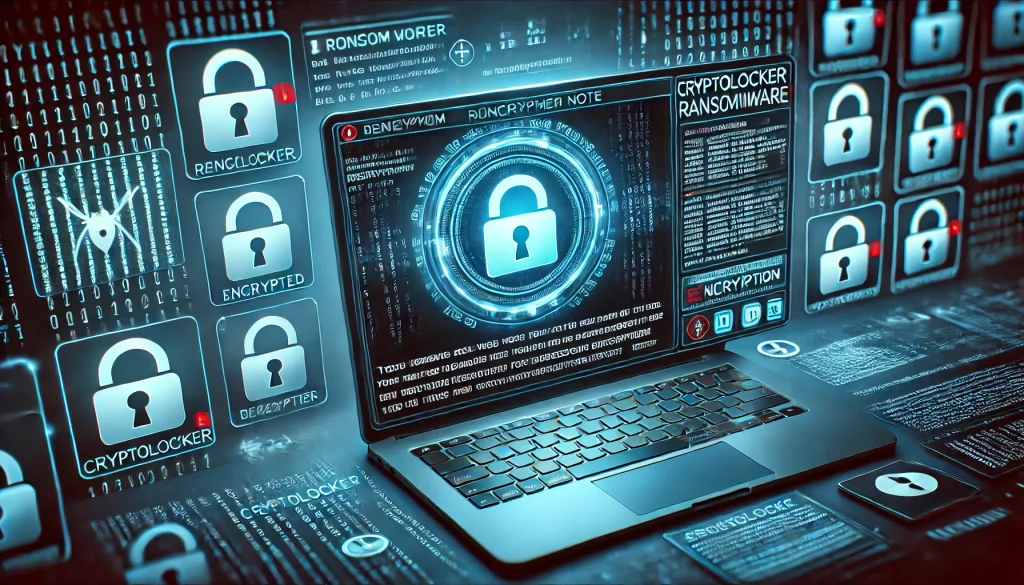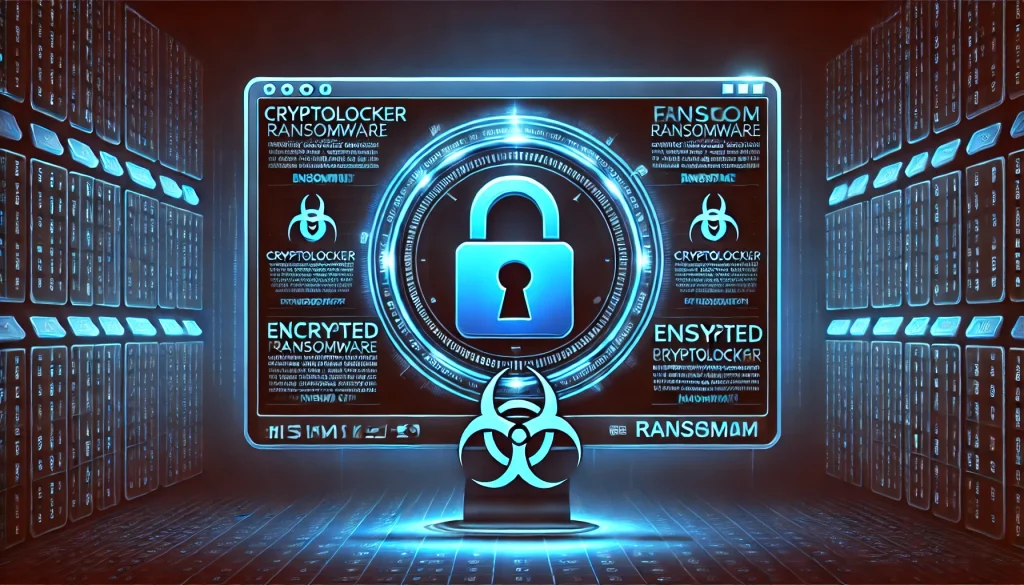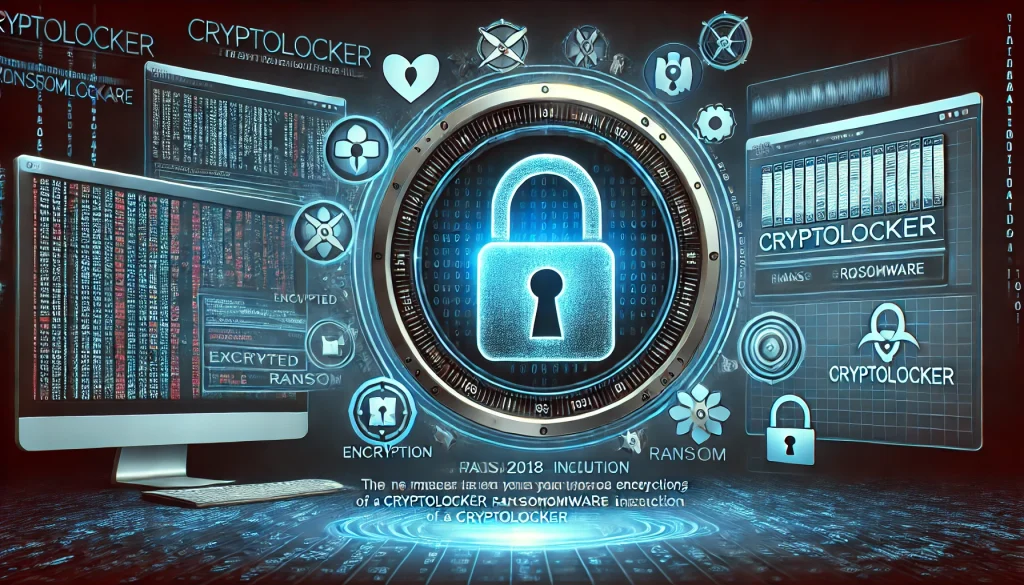
Cybersecurity is more critical than ever, and one of the most damaging threats businesses and individuals face today is CryptoLocker ransomware. This malicious software targets essential data, locking users out until a ransom is paid. In October 2024, CryptoLocker remains a top concern in the cybersecurity landscape, with new variants and techniques causing widespread disruptions. Understanding how CryptoLocker works, its impact, and how to protect against it is crucial for safeguarding sensitive information. This blog dives deep into the ransomware, offering insight into how it operates, the risks involved, and best practices to prevent infection.
Overview
In the world of cybersecurity, threats are constantly evolving. One particularly notorious example is CryptoLocker, a type of ransomware that has wreaked havoc on both individuals and businesses. First detected in 2013, CryptoLocker encrypts files on the victim’s computer and demands a ransom, usually in cryptocurrency, in exchange for the decryption key. Since its emergence, it has continued to evolve, introducing new variants that are increasingly difficult to detect and remove.
In October 2024, the relevance of CryptoLocker is heightened, as cybercriminals exploit security gaps in outdated systems and weak defenses. Organizations that are not vigilant in updating their antivirus solutions or implementing proper data protection measures remain particularly vulnerable. With the ransomware’s ability to disrupt operations, the need for robust protection has never been more pressing.
How CryptoLocker Works?

At its core, CryptoLocker is a form of ransomware that infiltrates a system through phishing emails, malicious downloads, or compromised websites. Once it gains access, the virus begins encrypting files on the victim’s device using advanced encryption algorithms. Critical files—such as documents, images, and databases—become inaccessible without a unique decryption key, which is only provided if the victim agrees to pay a ransom. The price for this key typically ranges from hundreds to thousands of dollars, and payments are often requested in Bitcoin or other cryptocurrencies to maintain anonymity.
Once infected, the victim is presented with a ransom note, detailing the amount they need to pay and a deadline to meet. Failure to comply within the given timeframe typically results in permanent data loss, as the decryption key is deleted by the attackers. While paying the ransom does not guarantee file recovery, many victims feel forced to comply out of desperation.
CryptoLocker is highly persistent and can spread across networks, impacting not only individual computers but also entire business infrastructures.
Examples of CryptoLocker Attacks
Over the years, there have been numerous instances of CryptoLocker attacks affecting various sectors. In 2013, the CryptoLocker virus infected over 250,000 systems in a matter of months, extorting millions of dollars from victims. Major corporations, healthcare institutions, and even government agencies have fallen prey to this form of ransomware, resulting in significant financial and reputational damage.
In 2022, a mid-sized manufacturing company in Europe experienced a severe CryptoLocker attack, which encrypted crucial production files. As the company had not backed up its data regularly, it was forced to halt operations for days. The ransom demand was over $300,000, payable in Bitcoin. Despite having antivirus software, the attack slipped through due to outdated security protocols.
In October 2024, a growing concern is the rise of ransomware-as-a-service (RaaS), which allows less-skilled cybercriminals to rent CryptoLocker malware, further increasing the frequency and sophistication of attacks.
Impact on Businesses
The consequences of a CryptoLocker attack can be catastrophic, especially for businesses. The immediate impact is data loss, with encrypted files rendered unusable unless the ransom is paid. However, the ripple effect of a CryptoLocker attack extends far beyond this. Businesses can suffer from prolonged downtime, loss of customer trust, and substantial financial losses.
One of the most damaging aspects of a CryptoLocker infection is the interruption to operations. When a company’s critical data is held hostage, productivity grinds to a halt. Employees are unable to access essential files, and in some cases, entire systems need to be shut down to prevent further spread of the virus.
Moreover, businesses that fall victim to a ransomware attack often face regulatory fines and legal consequences, especially if sensitive customer information is compromised. This can significantly impact an organization’s reputation and bottom line, making recovery difficult.
Prevention and Protection Against CryptoLocker

Fortunately, there are several measures businesses and individuals can take to protect against CryptoLocker and similar ransomware threats. Prevention is key, and staying proactive about cybersecurity is the most effective defense.
- Regular Backups: The most critical step in preventing ransomware damage is to maintain frequent backups of all important data. These backups should be stored in a secure, offsite location that is not connected to the main network.
- Antivirus Software: Ensure that your antivirus software is always up to date. Many modern solutions offer real-time protection against CryptoLocker and similar threats by detecting and blocking suspicious activities before they can harm your system.
- Email Filters: Since phishing emails are a common delivery method for CryptoLocker, it’s essential to implement email filters that block malicious attachments and links.
- Employee Training: Human error is often the weakest link in cybersecurity. Regular training on how to recognize suspicious emails, links, and websites can greatly reduce the risk of CryptoLocker infection.
- System Updates: Always ensure that your operating systems and applications are up to date. Attackers often exploit vulnerabilities in outdated software to gain access to systems.
For businesses, investing in cybersecurity insurance can also mitigate the financial blow of a ransomware attack, covering some or all of the costs associated with recovery.
The Future of CryptoLocker and Ransomware
As we move into the future, ransomware like CryptoLocker will continue to evolve. Cybercriminals are becoming more sophisticated, utilizing new technologies such as artificial intelligence to create harder-to-detect malware. Additionally, the increasing reliance on digital infrastructure by businesses makes them prime targets for ransomware attacks.
In October 2024, trends show that ransomware-as-a-service will likely become more prevalent. This model allows inexperienced hackers to purchase CryptoLocker variants and launch their own attacks, further democratizing cybercrime. The growing threat of ransomware will require businesses to stay one step ahead by adopting more advanced cybersecurity practices and continually updating their defenses.
Conclusion
In conclusion, CryptoLocker remains one of the most dangerous forms of ransomware in the world of cybersecurity. With its ability to lock users out of critical data and demand hefty ransoms, it continues to cause widespread harm to both individuals and businesses. The key to protecting against CryptoLocker lies in proactive measures, including regular data backups, up-to-date antivirus software, and thorough employee training on cybersecurity best practices. As the threat landscape evolves, staying vigilant and informed will be crucial to minimizing the risk of infection.
Ransomware attacks are on the rise in October 2024, and CryptoLocker continues to be a leading force in this cyber warfare. However, with the right prevention and protection strategies, it’s possible to safeguard your data and minimize the risk of becoming a victim. Investing in cybersecurity measures today can prevent future headaches and potential financial losses.
Key Takeaways
- CryptoLocker is a type of ransomware that encrypts data and demands a ransom for decryption.
- Businesses must take proactive steps to prevent infection, including regular backups and updated antivirus software.
- The future of ransomware will see continued innovation, with increasing risks posed by ransomware-as-a-service.
Resources
- Computerworld. CryptoLocker: How to Avoid Getting Infected
- DataStack Hub. CryptoLocker Ransomware
- NordVPN. What Is the CryptoLocker Virus?
- Norton. What Is CryptoLocker Ransomware?
- Varonis. CryptoLocker Ransomware
